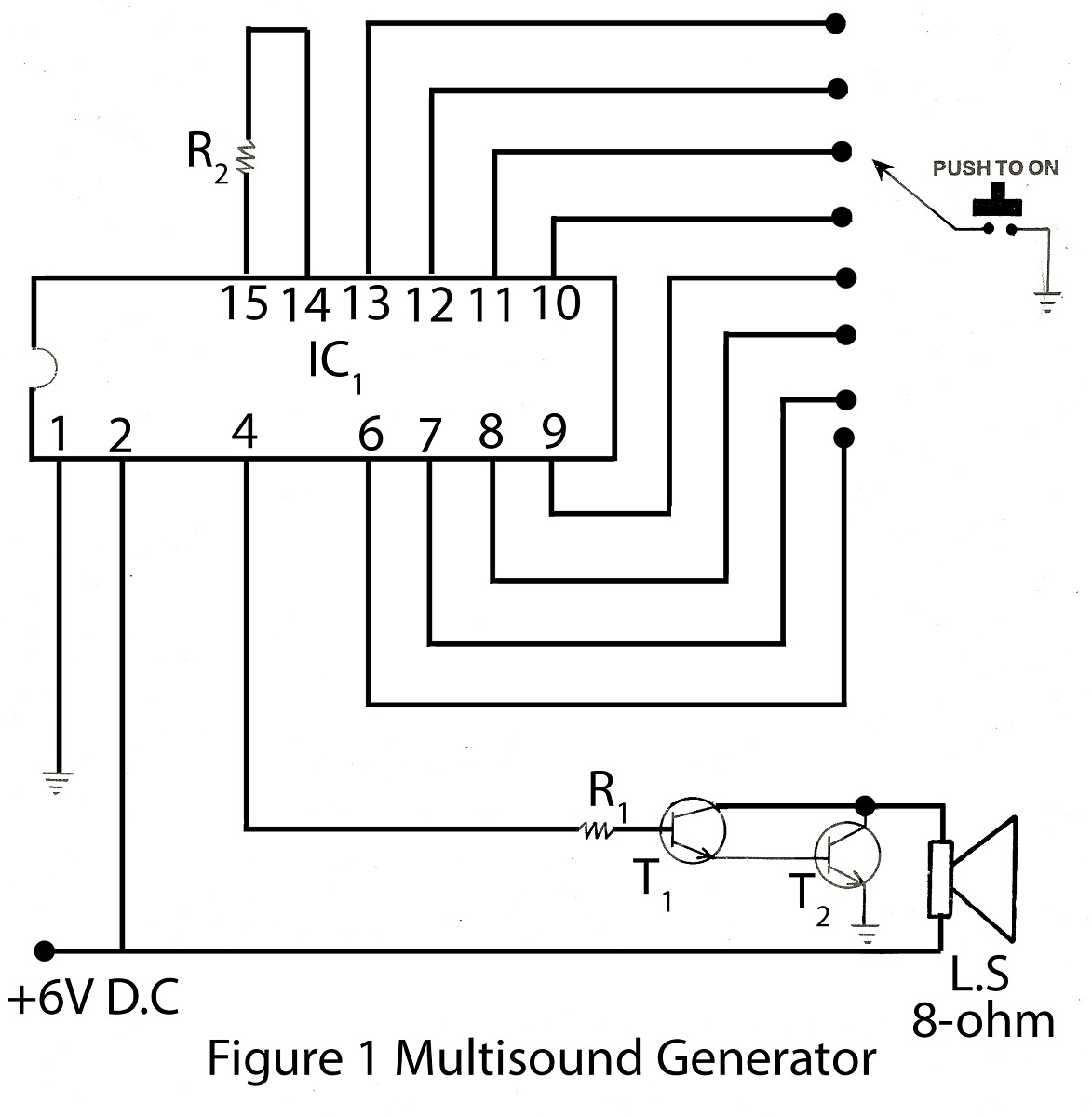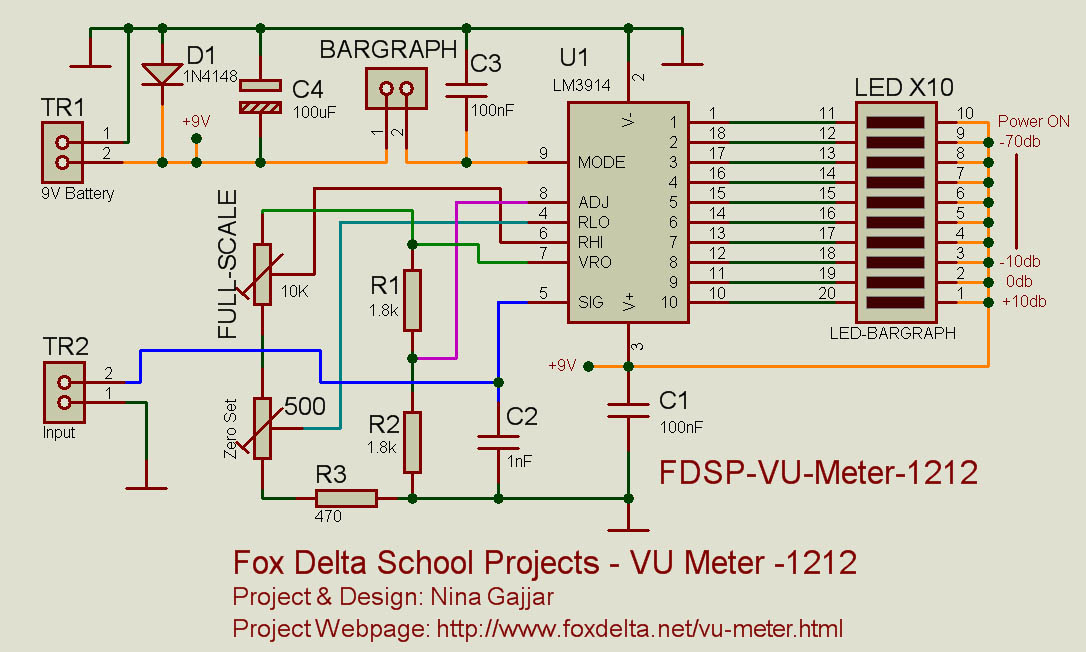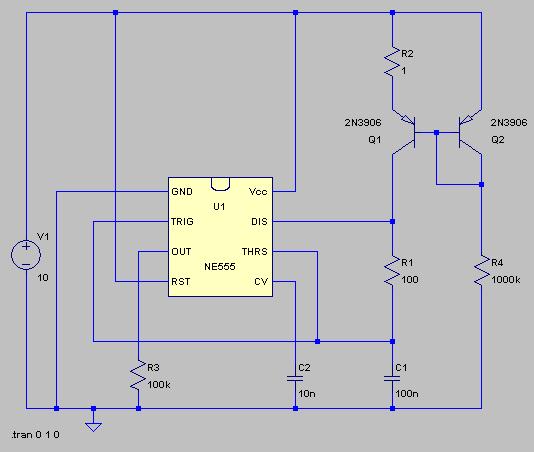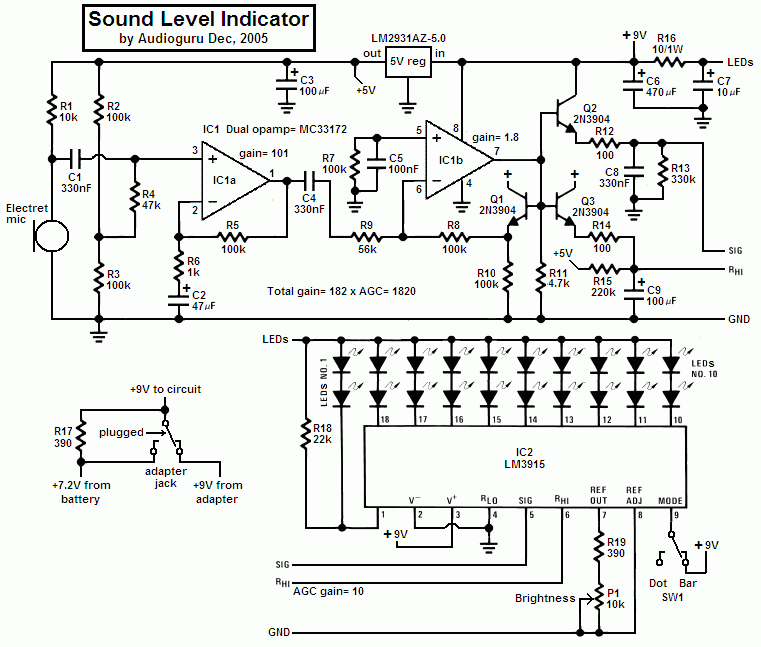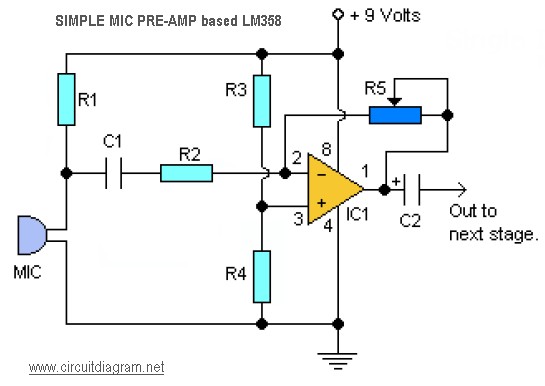
Simple Surround Sound Decoder
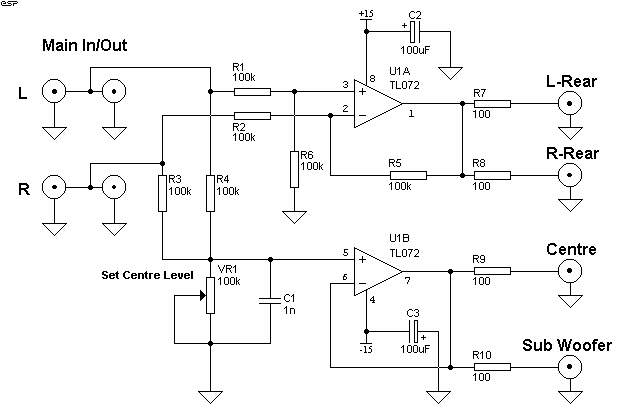
Simple Surround Sound Decoder. Introduction This surround-sound decoder is based on the Hafler principle, first discovered by David Hafler sometime in the early 1970s. The original idea.
The simple surround sound decoder utilizes the Hafler principle to create an immersive audio experience by processing stereo signals to produce surround sound. This circuit typically employs a few key components, including operational amplifiers, resistors, and capacitors, to achieve the desired audio effect.
The core of the circuit is an operational amplifier configured to mix the left and right audio channels. The output from this stage is then fed into additional circuitry designed to create the surround sound effect. This is accomplished by manipulating the phase and amplitude of the audio signals, allowing for the creation of virtual surround channels that enhance the listening experience.
Resistors are strategically placed to control the gain of the audio signals, ensuring that the output levels are balanced and suitable for driving speakers. Capacitors may be used for filtering purposes, helping to eliminate unwanted noise and ensuring that the audio output is clean and clear.
In terms of layout, the circuit should be designed to minimize interference and maintain signal integrity. This can be achieved by keeping signal paths short and using proper grounding techniques. Additionally, the power supply should be stable and adequately filtered to prevent hum and noise from affecting the audio quality.
Overall, the simple surround sound decoder based on the Hafler principle represents an effective solution for enhancing audio playback in various applications, from home theater systems to music production environments. Its relatively straightforward design allows for ease of implementation while delivering a significant improvement in audio immersion.Simple Surround Sound Decoder. Introduction This surround-sound decoder is based on the Hafler principle, first discovered by David Hafler sometime in the early 1970s. The original idea. 🔗 External reference
The simple surround sound decoder utilizes the Hafler principle to create an immersive audio experience by processing stereo signals to produce surround sound. This circuit typically employs a few key components, including operational amplifiers, resistors, and capacitors, to achieve the desired audio effect.
The core of the circuit is an operational amplifier configured to mix the left and right audio channels. The output from this stage is then fed into additional circuitry designed to create the surround sound effect. This is accomplished by manipulating the phase and amplitude of the audio signals, allowing for the creation of virtual surround channels that enhance the listening experience.
Resistors are strategically placed to control the gain of the audio signals, ensuring that the output levels are balanced and suitable for driving speakers. Capacitors may be used for filtering purposes, helping to eliminate unwanted noise and ensuring that the audio output is clean and clear.
In terms of layout, the circuit should be designed to minimize interference and maintain signal integrity. This can be achieved by keeping signal paths short and using proper grounding techniques. Additionally, the power supply should be stable and adequately filtered to prevent hum and noise from affecting the audio quality.
Overall, the simple surround sound decoder based on the Hafler principle represents an effective solution for enhancing audio playback in various applications, from home theater systems to music production environments. Its relatively straightforward design allows for ease of implementation while delivering a significant improvement in audio immersion.Simple Surround Sound Decoder. Introduction This surround-sound decoder is based on the Hafler principle, first discovered by David Hafler sometime in the early 1970s. The original idea. 🔗 External reference
